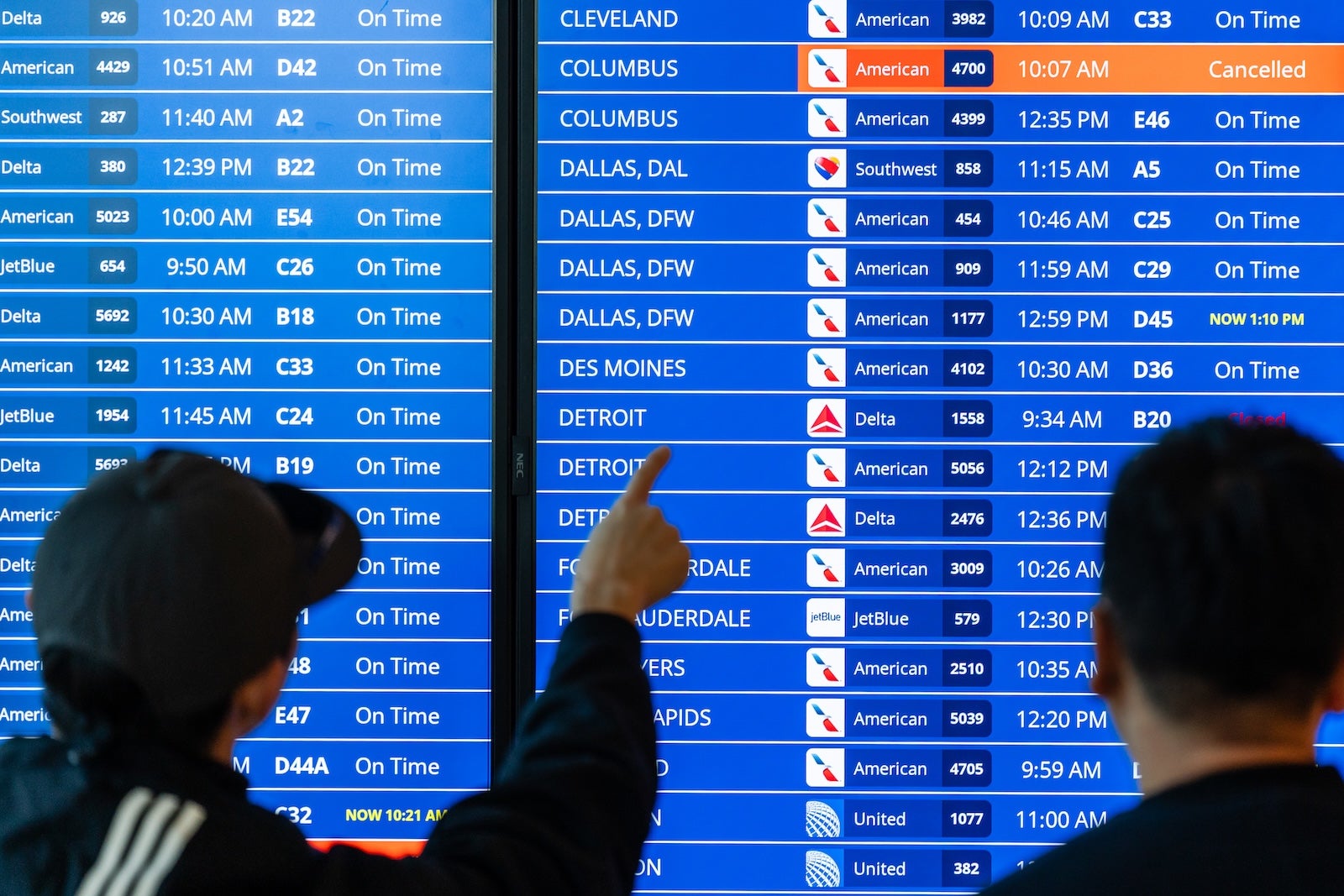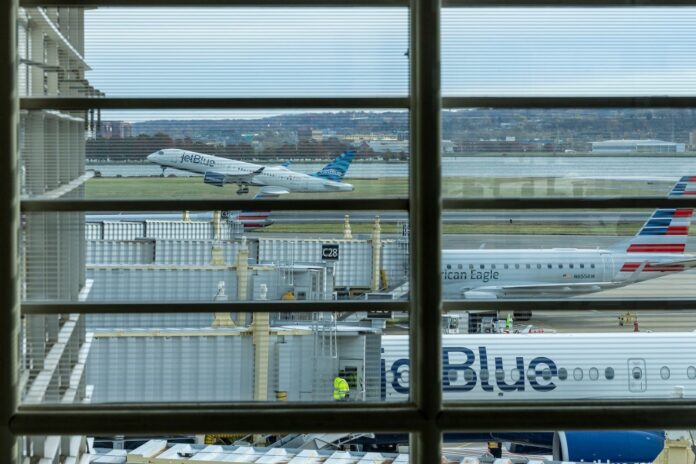What a difference a week makes.
Last Monday, we were coming off one of the most chaotic weekends at airports in several years, as the government shutdown fueled mass flight cancellations — and plenty of concern about Thanksgiving travel.
It’s safe to say that things are now looking up, with just 10 days to go until Turkey Day.
Early Monday, the Federal Aviation Administration stopped requiring airlines to cancel flights at 40 of the nation’s largest airports.
The move came amid a “steady decline in staffing concerns” at air traffic control facilities across the country, FAA administrator Bryan Bedford said.
During the shutdown, air traffic controllers worked without pay, and workers increasingly called out as the government failed to reopen for weeks. This fueled flight disruptions across the country and prompted the FAA to limit the number of flights airlines could operate.
But as the government reopened, things quickly improved at airports.
This past weekend, air travel was dramatically smoother than the prior weekend of Nov. 8 and 9, when passengers faced multihour taxiway backups, mounting cancellations and sleepless nights in airport terminals.
Airlines were allowed to return to flying a full schedule as of 6 a.m. EST on Monday.

Reward your inbox with the TPG Daily newsletter
Join over 700,000 readers for breaking news, in-depth guides and exclusive deals from TPG’s experts
And it came not a moment too soon: Beginning Friday, airlines expect to welcome a record 31 million passengers at airports for the Thanksgiving rush, a trade group for the largest carriers said this month.
‘All systems a go’ for Thanksgiving
Some industry insiders had feared travelers might run into some lingering shutdown-related snafus.
The early numbers, though, point to a major air travel rebound — one that could bode well for the holiday.
| Date | FAA alerts for low air traffic control staffing |
|---|---|
| Saturday, Nov. 8 | 81* |
| Sunday, Nov. 16 | 1* |
*Source: FAA.
On Sunday, cancellation rates at many of the largest U.S. airports were mostly in line with a normal travel weekend.
| Date | Percentage of flights canceled on U.S. airlines |
|---|---|
| Jan. 1 to Sept. 30 (preshutdown) | 1.6** |
| Oct. 1 to 30 (early shutdown) | 1.3** |
| Oct. 31 to Nov. 10 (late shutdown) | 3.2** |
**Source: FlightAware.
Flexible travel waivers end
As operations returned to normal, airlines — as expected — began winding down flexible travel waivers that allowed customers more freedom to make ticket changes and get refunds during the shutdown.

Travel waivers at Delta Air Lines and United Airlines ended on Sunday. American Airlines’ advisory also came to an end.
Refund rules still in effect
Customers still have rights, of course.
All passengers are owed a refund if they opt not to travel after a cancellation or significant delay.
But the extra flexibility available to consumers during the shutdown has, for the most part, come to an end ahead of the holiday.
Thanksgiving 2025 travel: What to know
Despite the rosier outlook for Thanksgiving, it’s still wise to be prepared for the unexpected.
Mother Nature can always throw a wrench in holiday travelers’ plans, especially if a bad weather system hits the congested Northeast.
And, keep in mind: The FAA still has a long-term air traffic control staffing shortage that can lead to flight delays on any given day (especially when there’s foul weather).
Make use of your airline’s app
If I had plans to travel for Thanksgiving, I’d continue to keep a hawkish eye on my airline app for any signs of flight trouble. This is key to rebooking yourself and getting your trip back on track if problems pop up.
Save time with TSA PreCheck
If you have TSA PreCheck access, make sure your Known Traveler Number is attached to your reservation. Also, sign up for the ultra-speedy TSA PreCheck Touchless ID initiative through your airline profile if you’re flying out of participating airports.
Read more: What to do if a boarding pass isn’t marked TSA PreCheck

All travelers can monitor checkpoint wait times using the MyTSA app, which should be operational again now that the shutdown has ended.
Plan ahead for the busiest day at airports
Finally, plan to arrive at the airport early, especially if you’re flying on Sunday, Nov. 30. Typically, the Sunday after Thanksgiving is the busiest travel day of the year.
Any apprehension among travelers?
Over the holidays, it’s worth watching whether the crowds will be any thinner in the wake of the shutdown. In a recent TPG survey with YouGov, a large portion of travelers reported they’d canceled, rebooked or reconsidered their holiday trip plans as a result of the recent chaos.
Airlines in hot water?
Could airlines be in trouble for running too smooth an operation?
Sure, passengers were happy to see air travel return to (somewhat) normal this past weekend.

However, the numbers were so good at some airports that it’s raising eyebrows in Washington, D.C.
Over the weekend, the Trump administration was technically still requiring airlines to cancel 3% of flights at 40 major hubs as part of a gradual return to full flight schedules.
According to FlightAware data, though, the cancellation rates failed to even reach 1% at many large airports, which suggests some airlines didn’t cancel as many flights as they were supposed to.
The FAA on Sunday said it was “aware of reports of non-compliance” by airlines and that it was “reviewing and assessing enforcement options.”
Related reading:
